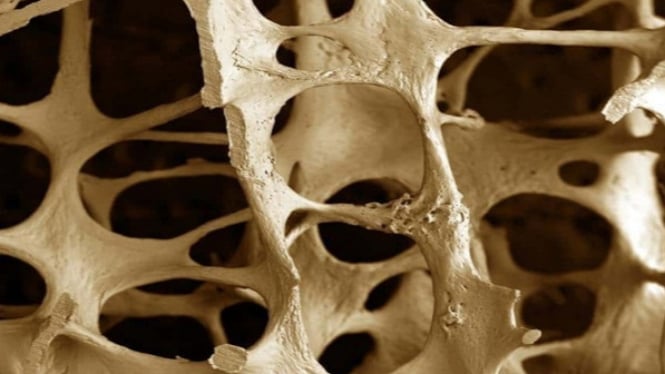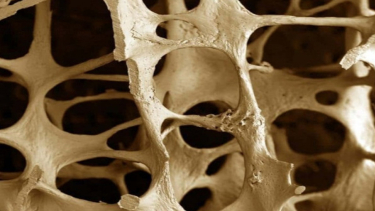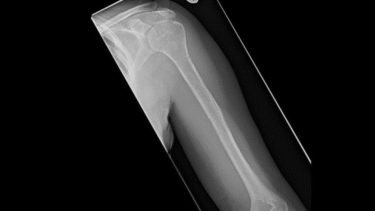10 Longest Bones in the Human Body, People Need to Know
- U-Report
VIVA – Basically, bones give shape to humans. Without bones, a human would look like a large mass of moving meat. Organ such as the lungs, heart, brain, and others will lose their protection without bones.
Bones help humans to move, do work and other activities. An adult has 206 bones, while a newborn baby has 300 bones. Well, here’s information about the longest bone in the body.
1. Thigh Bone (Femur)
Ilustrasi tulang.
- U-Report
This bone has an average length of 19.9 inches that extends from the hip to the knee to support weight and for walk stability. The thigh bone or Femur is capable of withstanding forces of up to 1,800-2,500 lbs., making it the strongest, heaviest, and longest bone in the body.
The femur basically supports the entire skeleton to stand upright. This bone contains red and yellow marrow which creates bone marrow stem cells and other substances needed to produce red blood cells. These specialized cells are very important because they carry oxygen throughout the body.
2. Shin Bone (Tibia)
Ilustrasi tulang tua.
- http://penghuni60sains.blogspot.com
The shin bone or tibia is 16.9 inches long. The shinbone serves as a link to the knee and ankle at each end. In addition, Tibia supports the Femur and ankle for our daily movements, such as running, walking, and jumping.
3. The Lower Leg (Fibula)
The lower leg or commonly referred to as Fibula is 15.9 inches long. The fibula is attached to the tibia. The function of the fibula is to provide stability to the ankle joint.
Ligaments attach to the grooves that each end of the fibula has. These ligaments help stabilize and utilize ankle movement. This breakage or fracture usually occurs in ankle injuries.
4. Upper Arm (Humerus)
The upper arm or Humerus is 14.4 inches long. This bone is located in the upper arm between the shoulder and elbow joints. This bone is significant because it avoids cracking.
The main arteries run along this bone. In addition, these arteries supply oxygen, nutrients, and blood to the arm. It’s also considered a ball and socket joint, where the ball is the head of the humerus while the socket is the scapula.
The humerus serves as the insertion point for many important muscles that help the humerus perform certain movements for the arms and upper body. Overall, it serves as a structural support for the arm.
5. Inner Forearm (Ulna)
Ilustrasi tulang manusia.
The ulna has 11.1 inches long. This inner forearm is connected to the humerus bone at the elbow joint that allows the human to carry out movement to the elbow and wrist.
Second, the Ulna is attached parallel to the Radius to create the distal radioulnar joint. Finally, cases of Ulna fracture are usually caused by an impact on a surface or object.
6. Outer Lower Arm (Radius)
Ilustrasi tulang kuat.
- U-Report
The forearm or Radius has 10.4 inches long. The radius attaches parallel to the ulna to form the distal radioulnar joint.
This bone attaches in 4 different places namely; elbow joint, proximal radioulnar joint, wrist joint, and distal radioulnar joint. Unfortunately, fractures of the distal radius are the most common fractures that usually occur during a fall.
7. True Ribs (Ribs 1 to 7)
The True Rib is 9.5 inches long. These ribs are very important because they protect our heart, lungs, tissues and other organs in our upper body. They also provide structural support for our muscles in the chest, shoulders, and back. In addition, our ribs are there to help with breathing.
8. Rib 8 to 12
The 8 to 12 ribs are called false ribs because they are not connected directly to the sternum. This bone has 9.1 inches.
In fact, the cartilage of the other ribs attaches it to the sternum. The ribs are very important, but they can also be deadly on impact. It can penetrate directly into the sense organ.
9. Pelvic Bone (Innominate)
Ilustrasi menggerepek tulang.
- http://sebaiknyaanda-tahu.blogspot.com/
The pelvic bone is 7.3 inches long. There are three fused parts that make up this bone, namely the Ilium, Ischium, and Pubis which are attached to the sacrum at the ipsilateral sacroiliac joint, and to the Femur at the hip joint.
Furthermore, the two hip bones join together at the pubic symphysis, and together with the pelvic part of the spine, form the skeletal components of the pelvis.
10. Breastbone (Sternum)
The sternum has 6.7 inches long and it’s located in the centre of the chest. The sternum serves as a protective organ of the body from serious injury.
This bone also functions as a bridge-like bone that connects not only the collarbone and most of the ribs, but also connects some of the chest and upper abdominal muscles.



































